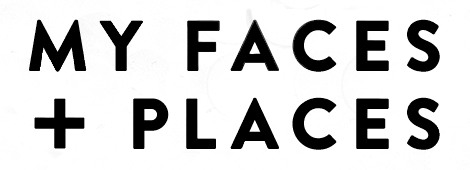An Andalusian Adventure In Ronda & Seville

Puente Neuvo The New Bridge of Ronda.
The very name ‘Andalusia’ conjures a romantic image of flamenco, bullfighting, matadors and the splendour of historical Moorish architecture. The Moors were medieval Muslims of a mixture of Berbers and Arabs from North Africa who were rulers of this region from 8th to the 15th century. Their influence in the culture, language, cuisine and the architecture of the region is embedded in the very soul of Andalusia, derived from the Moorish name Al-Andalus. It is blessed with a stunning landscape surrounded by the Sierra Morena and Sierra Nevada mountain ranges with sweeping valleys and precipitous gorges fringed by sandy coastline with the Mediterranean to the east and the Atlantic Ocean to the west. The local people boast of being able to ski in the Sierra Nevada mountains in the morning and sunbathe on the beach in the afternoon all in one day.
Michael and I travelled with five close friends in search of an Andalusian adventure. We pounded through the ancient streets of cobbled stones, visited every famous ancient palaces, fortresses and cathedrals devouring the enthralling history of this fabled land like culture vultures, not to mention devouring the yummy paella, tapas, Iberico ham, desserts and jugs of sangrias along the way. We had an uproarious time together packed full of camaraderie, humour, adventure and a touch of …well madcaps! Our lively Iberian sojourn was made highly enjoyable thanks to an excellent and professional ground handler, the pretty Spanish senorita Rosa Lara from Just Explore, a local tour operator who designed a bespoke itinerary for us. Rosa personally researched, executed and accompanied us in our quest to trace in the footsteps of the Roman, Moorish and Christian conquerors of the past in the medieval cities of Ronda, Seville, Cordoba and Granada, the historical jewels of Andalusia, marinated in history for centuries. Unlike the medieval conquerors riding into the cities on horsebacks, we rode into each city in a modern ‘iron horse’ otherwise known as a Mercedes van captained by the delightful Alfredo, our driver. Not only was Alfredo an excellent driver, he also had the patience of a saint dealing with seven exuberant Asians, some with luggage so heavy that prompted him to ask, “What have you got in there, a body?” Alfredo also assured me that “the rain in Spain” does not fall mainly on the plain (as in My Fair Lady). By jove, I think he’s got it – a good sense of humour!
Ronda Rendezvous
Alfredo took us to Seville via Ronda, one of the oldest towns in Spain. The town is perched dramatically at 120m above the El Tajo canyon commanding a spectacular vista of the Serrania de Ronda mountains. The town is dominated by three bridges – the Roman Bridge, the Old Bridge and the New Bridge popularly known by its Spanish name, Puente Nuevo (albeit built in 1751 and completed in 1793) but relatively new compared with the afore mentioned two ancient bridges.

Stunning vista of the valley and Serrania de Ronda mountains.

The Puente Nuevo spanning over the dramatic chasm of Ronda.
In its hey day in the 19th and early 20th century, Ronda was a favourite haunt for artistes and writers such as Ernest Hemming, George Eliot and Orson Welles among others. The amazing Puente Nuevo is a main feature of the town spanning across the chasm with vertiginous drop into the gorge, quite a mean feat of engineering in its day. Aside from its historic features, Ronda is also famous for bird watching. At the La Alameda Park mirador or viewpoint, it overlooks the breath-taking view of a lush valley deep down below. The precipitous cliff face provide safe nesting roosts for many bird species including several breeds of raptors such as honey buzzard, black kite, peregrine falcons, griffon vultures and booted eagles. Every year avid twitchers come to Ronda for bird watching.
A Seville Sojourn
Seville is the capital of Andalusia, which also serves as the cultural and financial centre of southern Spain. Situated on the banks of the Guadalquivir River, it is divided into two districts – the Sevilla and Triana. It was an important trading post from the Roman times to Muslim rule and the trade in the Americas but declined in importance when the river began to silt up and made the river not navigable further than Seville. It is a magnificent city with superb historical buildings, reflecting its wealth in the past. Our first cultural expedition was the Casa de Pilatos, a 16th century ducal palace, which was the residence of the noble family of the House of Medinaceli. Each room is beautifully adorned with precious azulejos hand-painted ceramic tiles like works of art. The palace was designed in a mixture of Renaissance and Mudejar Spanish style with commodious rooms and ornate ceiling.

The beautiful garden of Casa de Pilatos in Seville.

A lush cascade of pink bougainvillea in the Casa de Pilatos garden.
The Mudejars were Muslims who remained in Andalusia after the Christian Reconquista, a period spanning 781 years of reconquest attempts by the Christians battling with the Moors to regain their land. The piéce de résistance of the palace is the amazing garden and courtyards ornamented by statues, water features and festooned with sumptuous bloom of fuchsia pink bougainvillea that clad the garden walls like a cascade of pink waterfall.
A trip to Seville is not complete until you visit the two crown jewels of the city – the Royal Alcazar and the Seville Cathedral. The Royal Alcazar is one of the most beautiful royal palaces in Spain and the oldest palace still in use in Europe with the upper levels housing the private apartments of the present royal family of Spain. It is an outstanding example of Mudejar architecture in Spain with palatial halls displaying mind-blowing craftsmanship of intricate carvings and walls decorated with marvellous azulejos tiles. The imposing red gate of the palace, Puerta del Leon with the emblem of a lion wearing a crown and holding a cross in its paw is the symbol of the old Christian rule.

” Sunken Garden of Paradise” with the reflecting pool at the Royal Alcazar in Seville.

The serene garden with Moorish influence of the Royal Alcazar.
In the inner sanctum of the palace are series of courtyards and patios while in the heart of the palace is a large rectangular reflecting pool with a sunken garden on each side to represent paradise on earth by the Muslim rulers. The Alcazar went through many transformation and addition by various Muslim and Christian rulers resulting in a mixture of Islamic and Neo Classical style with beautifully manicured gardens.
Seville Cathedral is hailed as the largest cathedral in the world with 80 chapels and 15 imposing doors on its four facades, built in 1402 on the site of a Moorish Almohad mosque that was built in 1184 but was destroyed by an earthquake. The only part intact was the minaret, which was converted to the Giralda Bell Tower. The cavernous interior is divinely grand and opulent notably the gargantuan organs and the Retablo Mayor, the gilded altar piece in the main chapel depicting scene from the Old Testament and lives of saints. It took 44 years to complete and today is the iconic centrepiece of the cathedral. The remains of Christopher Columbus are interred here in a sarcophagus borne by four statues of pallbearers.

The glorious Retablo Mayor in Seville Cathedral.

The Giralda Bell Tower of Seville Cathedral.
Visitors can climb up the Giralda via a series of ramps to reach the 105m high belfry affording a bird-eye view of the city. It seemed like the whole world and their wives were eager to climb the bell tower that day as we jostled our way up the ramps among the throngs of people and sneaking glimpses of the city from windows along the way. Frankly it was not worth the effort as it was too crowded and frenetic.
After the soul-saving but energy-sapping visit to the cathedral, we hightailed to the Plaza de Espana at the Maria Luisa Park. On the way along the grand boulevard were buskers strumming their guitars belting out songs with gusto while a gypsy girl danced the flamenco for money, tapping her feet and swirling her body to the furious tempo of the guitar played by her companion. As we passed a row of touristy cardboard cut-outs of flamenco dancers, some of us could not resist the temptation to slip behind the cut-outs posing as flamenco dancers for the princely sum of only 1 Euro each. We looked quite fetching in the cardboard costumes. Ole!

Flamenco flamboyance.

Plaza de Espana.
The Plaza de Espana was built in 1928 for the Ibero-American Exposition of 1929 to showcase the industry and technology exhibits of Spain. The horseshoe shaped stately building is a landmark example of the Spanish Renaissance Revival architectural style complemented with Art Deco and Neo Mudejar influences. The Plaza is fronted by a moat with an imposing fountain in the centre designed by Vicente Traver, a well-known Spanish architect who designed most of the buildings at the Plaza. There are beautiful tiled alcoves, each representing the different provinces of Spain. Today the Plaza is a government building that serves the Seville Town Hall, museums and offices. The exotic complex had been used as film locations for Lawrence of Arabia and Star Wars Episode I and II.

The magnificent building of the Seville Town Hall.
We had completed the first part of our Iberian adventure and were satiated with cultural overload and had seen an abundance of oranges to last us a life time, for Seville is famous for its plethora of bitter oranges fit only for making marmalades. Oranges are also grown as ornamental plants along the streets and gardens everywhere. Oranges, oranges everywhere and not a fruit to eat! But our marvellous experience in Seville is immensely memorable and every time I see an orange, it reminds me of this wondrous place where the souls of the Moors still linger on in the city. Watch this space for our next Iberian adventure in Cordoba and Granada in the next blog.

Oranges are found everywhere in gardens and along the streets of Seville.
Ronda has applied to be listed as a UNESCO World Heritage Site.
Seville – Cathedral and Alcázar are listed as UNESCO World Heritage Sites.
For a bespoke tour of Andalusia, contact Rosa Lara at Just Explore
©MyFacesAndPlaces 2016



